
This is a part of “A Year in the Wild Kitchen of the Great Lakes,” a series in partnership with expert forager Lisa M. Rose, with the mission of nurturing a deeper connection with the natural world through foraging. To get started with your foraging journey, begin here with our “Framework to Sustainable and Safe Practices.”
As winter sets in, it’s the perfect time to reflect on your year of foraging, plan for the coming seasons, and ensure your pantry is stocked and your health fortified. Preparing thoughtfully during these quieter months not only helps you make the most of your past harvest but also sets you up for a resilient & healthy winter season.
Stocking Your Winter Wellness Pantry
A well-stocked pantry of both wild and culinary herbs and ingredients is the cornerstone of staying healthy and prepared during the colder months. Here are the essentials to have on hand:
Tools and Supplies for Preserving and Wellness
- Apothecary bottles (various sizes) for tinctures and syrups
- Canning jars with new sealing lids for preserving broths, syrups, and herbal infusions
- Dehydrator and drying screens for herbs and roots
- Mortar and pestle or grinders for crushing herbs and seeds
- Funnels, ladles and measuring cups for transferring and mixing
- Slow-cooker or water bath for infusing oils and simmering broths
- Twine, paper bags and tongs for organizing and drying
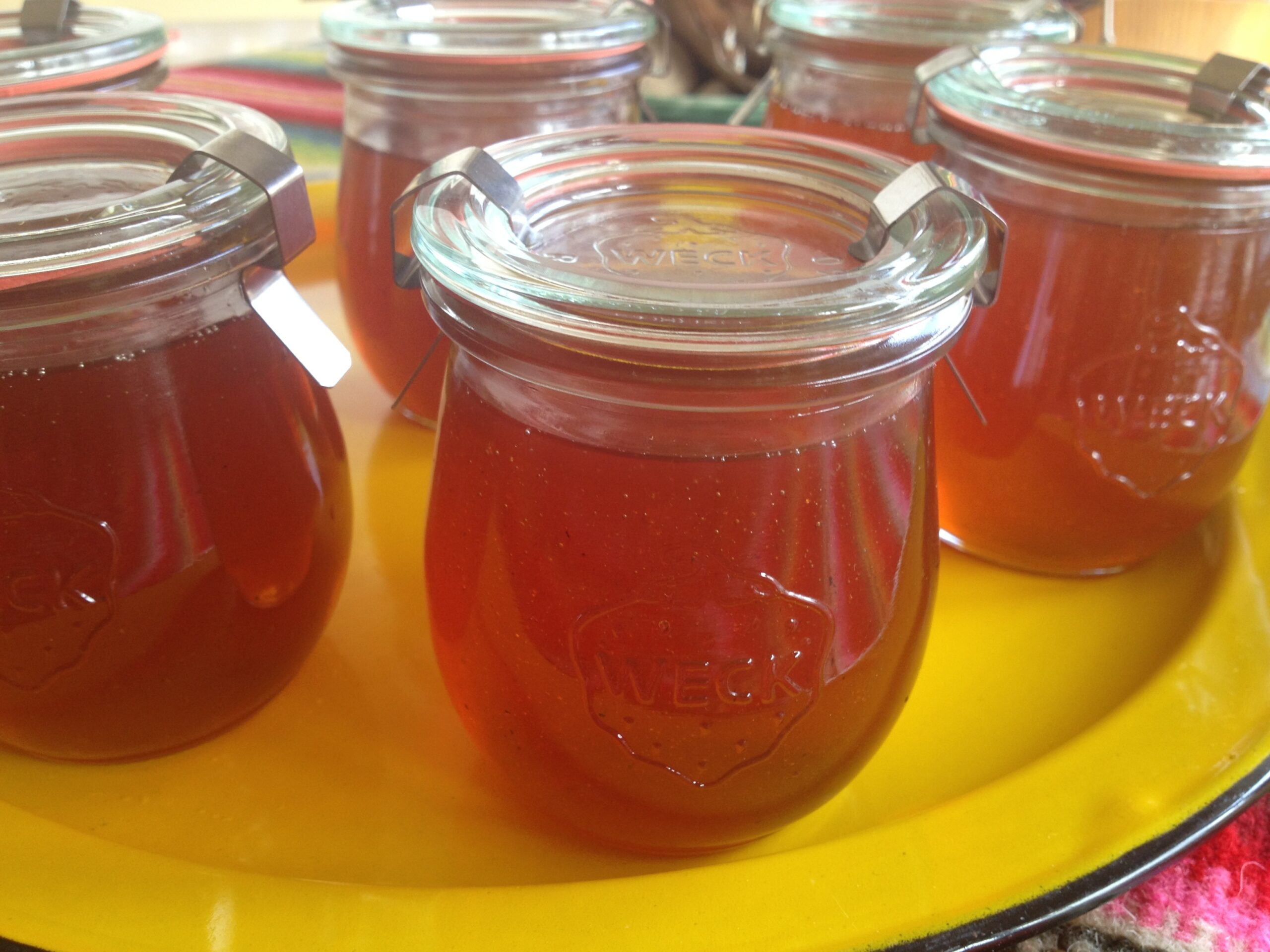
Raw honey is antimicrobial and perfect for soothing colds and adding sweetness for wild tea infusions. (Photo Credit: Lisa M. Rose)
Pantry Staples
- Raw honey: Antimicrobial and perfect for soothing colds and sore throats
- Olive oil: Essential for making herbal oils and salves
- Salts (rock, sea, pickling): Useful for cooking and preservation, as well as using in baths for herbal soaks and body scrubs
- Vinegars: Ideal for tinctures and liniments
- Liquors (vodka, mead, or brandy): For tincture bases (and the occasional hot toddy!)
- Herbal teas: Stock your favorites like chamomile, elderflower, peppermint and ginger alongside your foraged harvest from summer
- Garlic and onions: Antimicrobial powerhouses for cooking and teas
- Dried herbs: Rosemary, thyme, lavender, yarrow and mullein are versatile and medicinal
Here are some practical ways to use your supplies:
Infused Honey
Combine raw honey with dried herbs like chamomile, lavender or elderflower. Let it steep for a few weeks and use it as a tea sweetener or immune booster.
Herbal Oils and Salves
Infuse oils with calendula, rosemary or lavender for soothing topical applications. Mix with beeswax to create salves for dry skin or minor wounds.
Broths in Advance
Batch-cook chicken, beef or vegetable broths with aromatic herbs and freeze in portions. These become lifesavers when you’re unwell or need quick nourishment.
Kick the Ick: Stay Strong This Winter
Rest, Don’t Stress
Winter is a time to restore, not overextend. Excess stress weakens your immune system, leaving you susceptible to illness. Prioritize rest, nourishing meals and Vitamin D to stay healthy. And don’t forget exercise and getting outside! Especially in winter, moving the body and getting fresh air plays an important role in managing stress and strengthening immunity.
Eat for Immunity
Consume onions, garlic and raw honey for their antimicrobial properties. Hot soups with aromatic herbs like thyme and sage are both nourishing and sinus-clearing.
- Broths and Soups: Create clear broths filled with onions, garlic and aromatic herbs to warm the body and support immunity.
- Garlic and Onions: Use liberally in your cooking for their aromatic and antimicrobial properties.
- Teas and herbal infusions: Add in herbal teas to your routine — both aromatic teas and nourishing herbal infusions are great tools to rely on for stress management and keeping the body healthy. Check out our earlier column on my favorite Great Lakes Woodland Chai for ideas of how wildly foraged herbs and mushrooms can be used in your pantry.

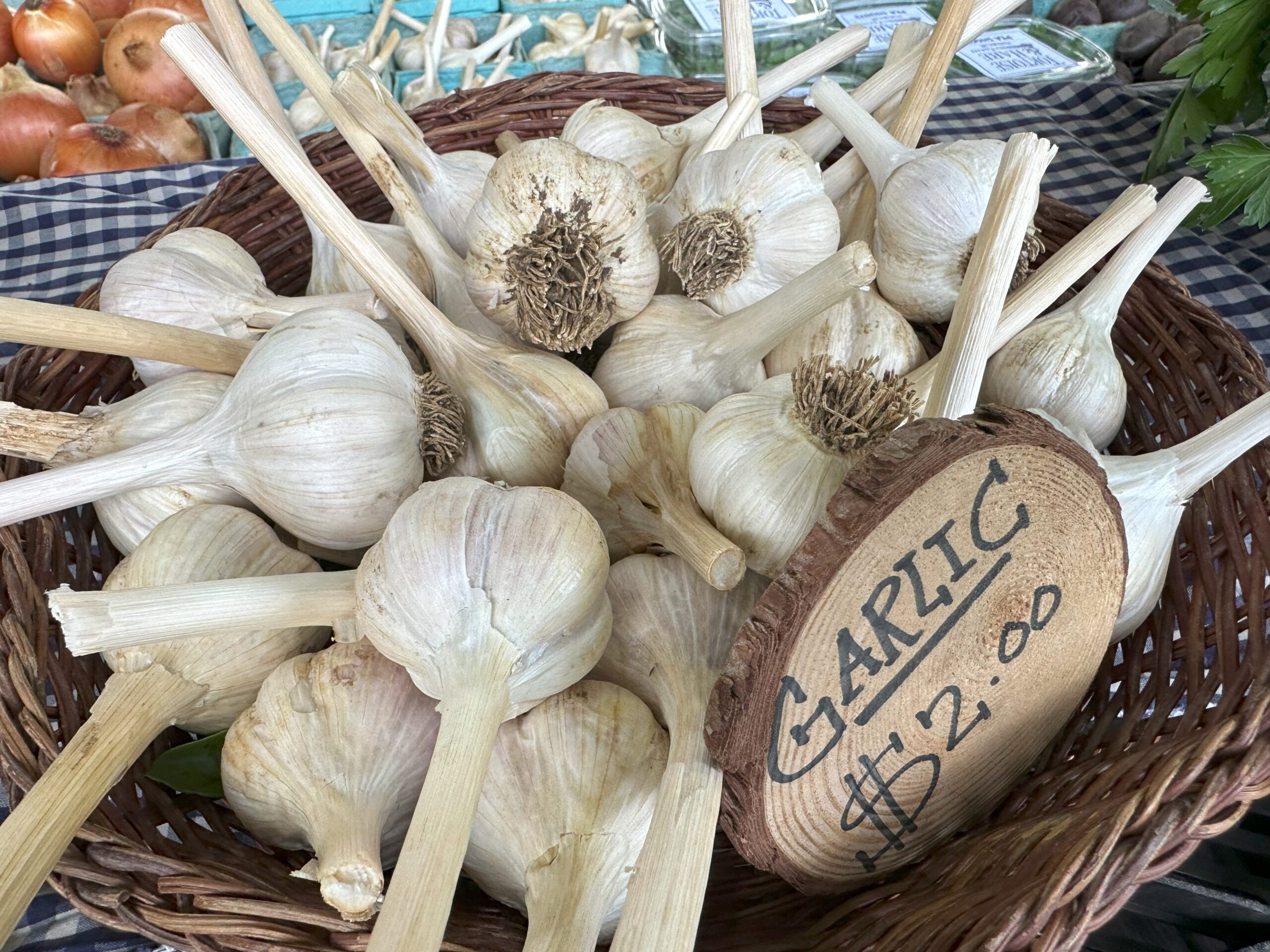
Garlic is a powerhouse herb for its antimicrobial and aromatic therapeutics and a key ingredient in the winter wellness pantry. (Photo Credit: Lisa M. Rose)
Recognize Early Signs of Illness
Fatigue, aches and pains are often your body’s way of signaling the need to slow down. My theory? Cut your losses early, rest and get better more quickly. Renegotiate any short term commitments to allow for some significant rest. Do what you can to rearrange the workload so your immune system gets a bit more bandwidth to fight an infection. Remember, energy put into work while you are sick is energy that could be used for your healing.
Engage in “life triage” by identifying what commitments can be delayed or delegated while you recover. Rest is key to avoiding secondary bacterial infections.
Support the Fever and Sniffles
At this point, you are sick and the hypothalamus is calling in the troops. Don’t try suppressing those immune responses like the sniffles and a fever. Remember — these are not illnesses. They are ways the body helps fight illness and are your body’s natural defenses. Avoid suppressing these responses and instead support them with hot teas made from elderflower, ginger, chamomile, or yarrow. Use aromatic herbal steams with peppermint or eucalyptus to soothe congestion.
- Herbal Steams: Use eucalyptus or peppermint oil to open sinuses. Alternatively, brew thyme, sage or lavender for aromatic relief.
- Hot Teas: Elderflower, ginger, chamomile and yarrow help the body produce effective fevers while relaxing aches and pains.
- Don’t Suppress Mucus: Mucus is your body’s way of flushing out toxins. Work with it by staying hydrated and drinking aromatic teas.
Early-On Herbal Therapeutics
When you first start feeling crappy, try to kick the ick early and employ herbal therapeutics to support your body’s immune processes.

Elderberry put up in jars for winter’s elderberry syrup. Elderberry has a long-standing history of use against viral infections. Use it at first signs of illness. (Photo Credit: Lisa M. Rose)
Bust out the elderberry syrup — it can help inhibit the virus’ ability to reproduce. Echinacea also can help boost the peripheral immune system. Combo teas like mint, yarrow and elderflower are a must-have to help early on in a cold or flu, helping stimulate the immune system and relax the body.
- Elderberry Syrup: Helps inhibit virus reproduction
- Echinacea: Boosts peripheral immunity
- Combo Herbal Teas: Mint, yarrow and elderflower help stimulate immunity and soothe the body
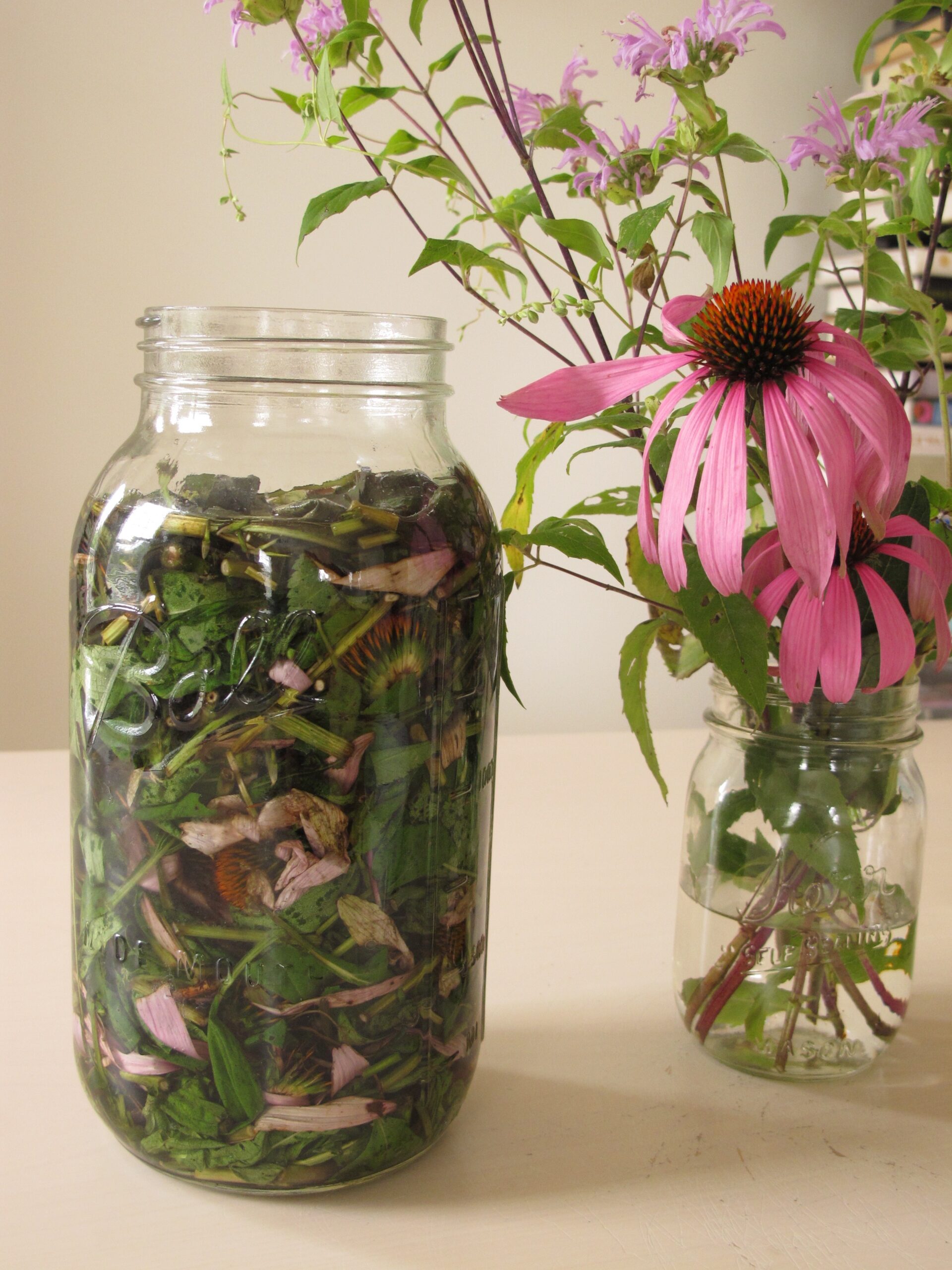
Echinacea is a great herb to have on hand dry as tea or in tincture form and is helpful early on in fighting infections when illness strikes. (Photo Credit: Lisa M. Rose)
Digestive upset? Hydration is Essential
For digestive upset, ginger tea or spearmint can soothe nausea, while blackberry root tea helps with diarrhea. Keep fluids simple and consistent to prevent dehydration.
- Ginger Tea: Soothes nausea
- Blackberry Root Decoction: Astringes and helps dry up diarrhea conditions
- Simple Fluids: Sip water with lemon to rehydrate and support lymphatic function
Support Recovery
As your body heals, assist the lymphatic system in clearing toxins with:
- Lemon water
- Mullein or red root teas
- Light soups and continued hydration to flush out the lymphatic system
Ease Back Into Activity
Don’t rush back into the grind the moment you feel better. Slowly reintroduce work and physical activity over 10 days to avoid secondary infections.
Reflect and Recharge
Winter is a time to rest, recharge and reconnect with your foraging goals. Use this downtime to prepare your body and pantry for the seasons ahead.
Lisa Rose’s Great Lakes Wildflower Cold & Flu Tea
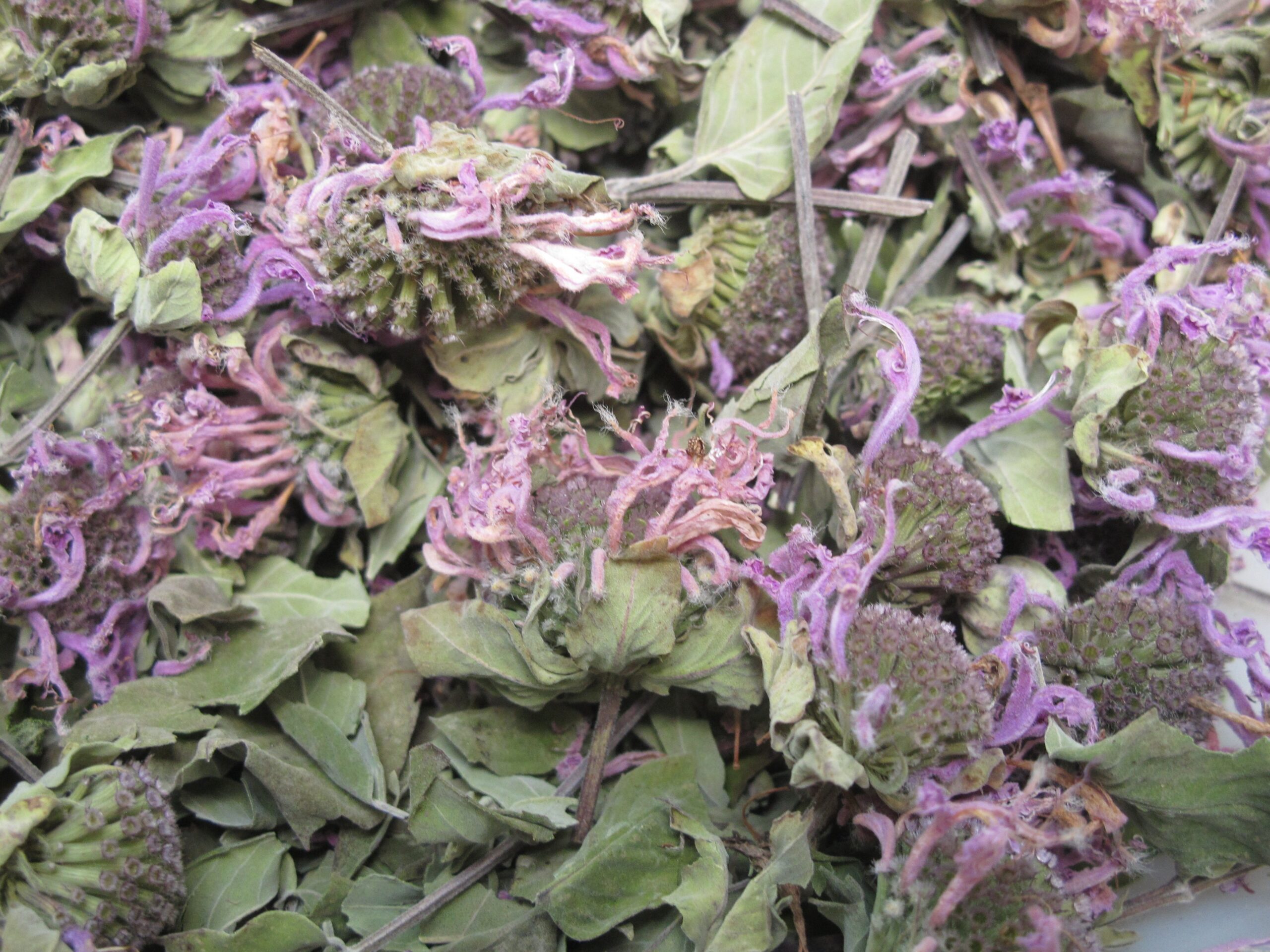
Wildly foraged bee balm (Monarda fistulosa) dried for tea. (Photo Credit: Lisa M. Rose)
This blend of elderflower, yarrow and peppermint is a wonderful blend to have on hand when illness strikes! Learn more about these Great Lakes wild plants and others in my Great Lakes Now High Summer Wild Herbs feature!
Ingredients:
- 1 part Yarrow
- 2 parts Elderflower
- 2 parts Peppermint or Bee Balm
Steep covered for 5 minutes and drink hot.
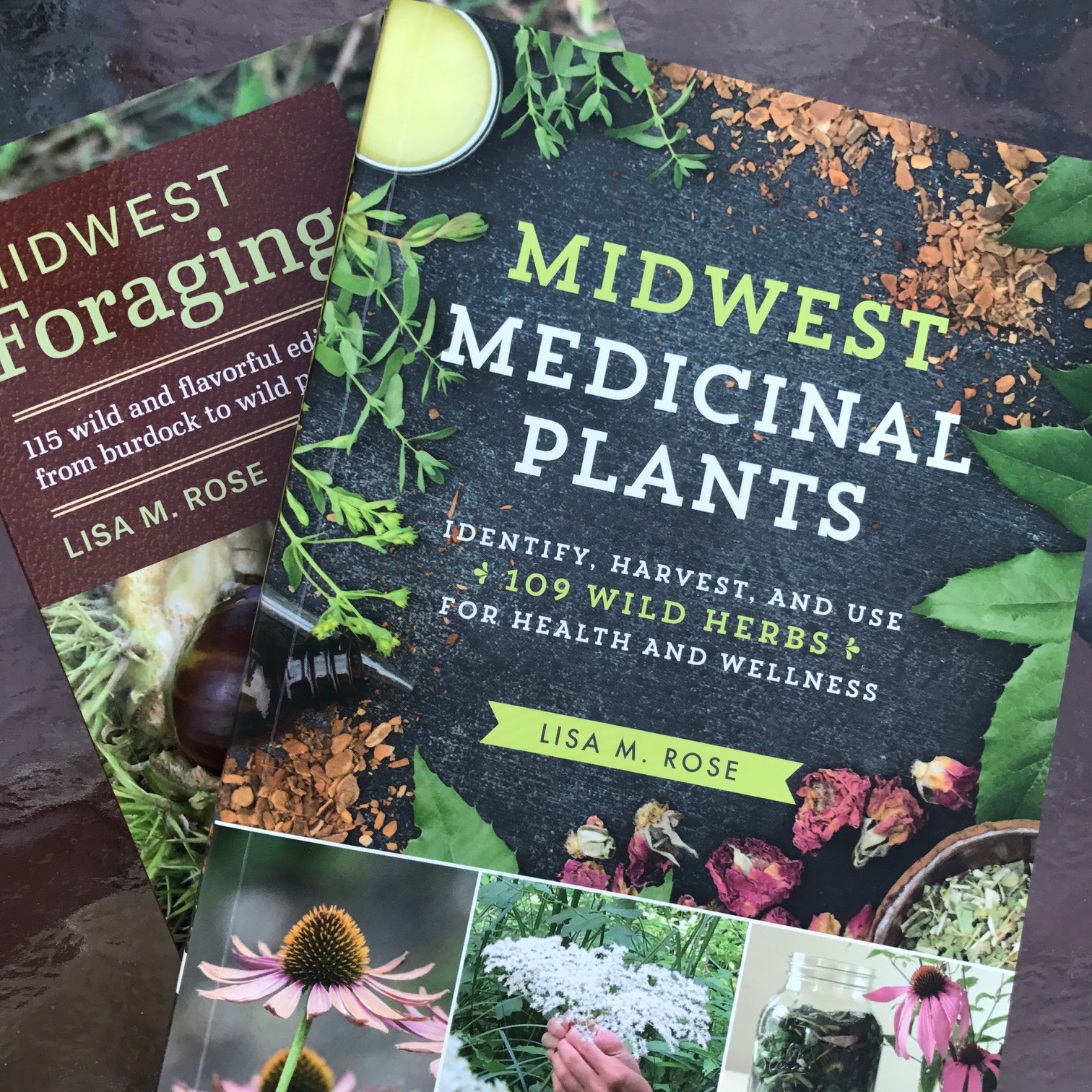
For more ways to use these and other wildly foraged plants for both food and medicine, check out “Midwest Medicinal Plants” and “Midwest Foraging” by our contributor, Lisa M. Rose. (Photo Credit: Lisa M. Rose)
About the Author
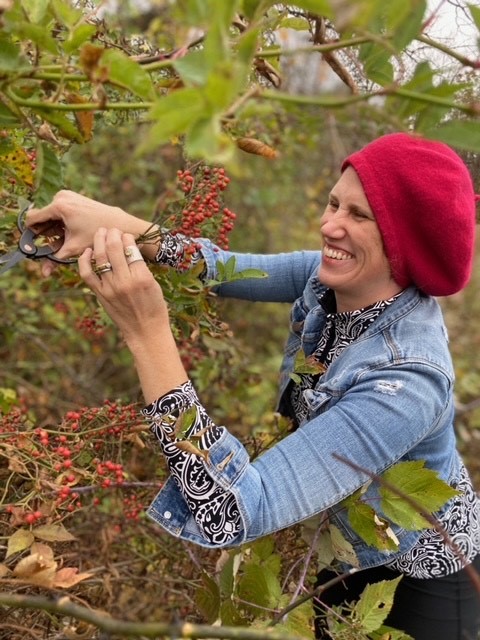
Lisa M. Rose is an ethnobotanist, wild foods chef, and author with a profound dedication to exploring the symbiotic relationship between humans and plants. With an academic background in anthropology and community health, her culinary journey has been rich and varied, including stints with notable establishments and figures such as Stags Leap in Napa Valley, Alice Waters’ The Edible Schoolyard, and organic farmers in Northern Michigan.
Rose’s work is celebrated in her bestselling books, “Midwest Foraging” and “Midwest Medicinal Plants,” among others and her expertise is frequently sought by major media outlets, including the Chicago Tribune, PBS, NPR, Martha Stewart and CNN.
Catch more news at Great Lakes Now:
A Foraged Great Lakes Woodland Chai Tea
Foraged Fruit and Nuts: Wild Apples & Abundant Acorns
Featured image: Wild and culinary herbs alike are key ingredients of the forager’s winter wellness pantry. (Photo Credit: Lisa M. Rose)




